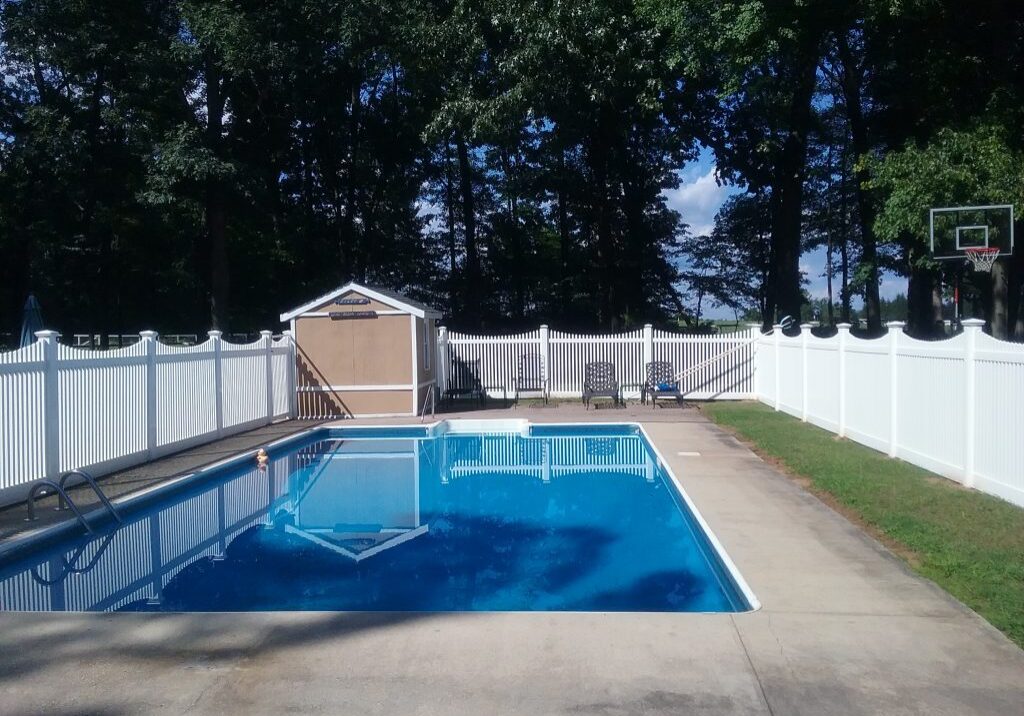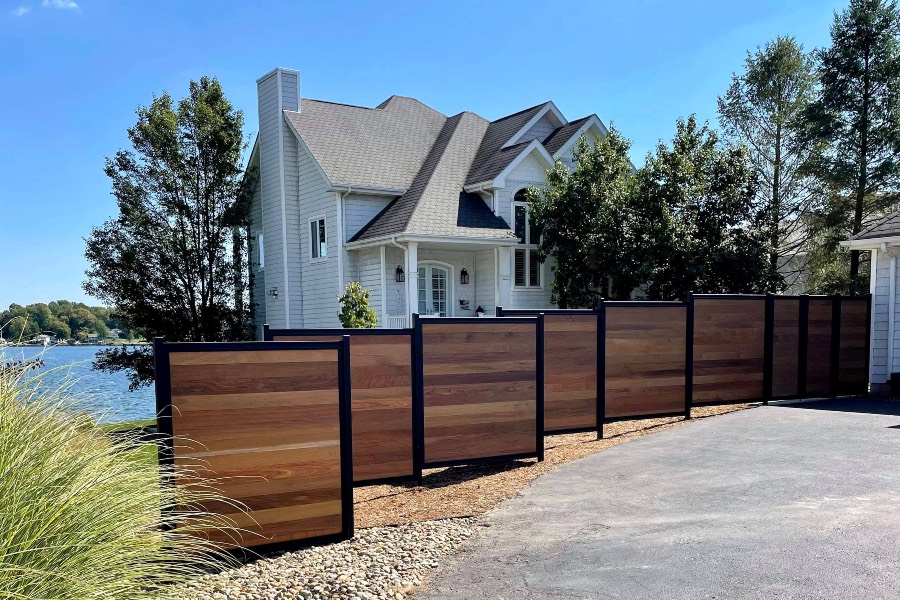Featured
Setting up a fence around your property can improve personal privacy, safety and security, and looks. Nevertheless, before starting, it's crucial to figure out whether you require an authorization for the installation. Various areas have varying laws, and comprehending what's required will certainly assist make certain that your fence is legal, secure, and developed according to neighborhood standards. Right here's an overview to aid you navigate the allowing procedure for fence setup.
Why Are Permits Called for? Authorizations are required to guarantee that the setup of your fence satisfies neighborhood building regulations and zoning regulations. These laws are in location to preserve the safety and security, look, and functionality of homes in your community. In addition, permits help stay clear of disagreements with neighbors regarding residential property lines, fencing height, and various other structural details.
Local authorities need licenses to keep track of points like presence at junctions, public safety and security, and potential damages to utilities like water pipelines or electric lines. The process assists maintain your fence job compliant with security and lawful criteria.
Types of Licenses You Might Require. The precise licenses required can vary depending upon your place and the specifics of your job. Below are one of the most usual sorts of licenses you might need:
Building License. Numerous cities and counties need a building permit for fences that surpass a particular height, generally over 6 feet. This license ensures that your fence follows structural criteria, especially if it's made from certain products such as concrete, metal, or block. Structure authorizations are also required when your fence impacts the general landscape, like producing an or obstructing a sightline.
Zoning License. Zoning permits are provided to make certain that your fence complies with local zoning legislations. These legislations might control where fences can be put on your home (e.g., front, yard, or side), exactly how high they can be, and whether they can be set up near walkways or streets. Zoning laws are put in place to preserve the overall appearances of areas and keep web traffic security.
Obstacle Permit. Some areas have setback regulations that identify exactly how far a fencing should be from the property line, roadway, or specific public areas. Problem permits are designed to ensure that your fence doesn't disrupt neighboring residential properties or public areas. A residential property survey might be needed to verify building lines prior to getting this sort of authorization.
HOA Authorization. If you reside in a neighborhood governed by a Homeowners Organization (HOA), you might require to obtain authorization from the HOA prior to mounting a fence. HOAs usually have strict standards concerning the kind of fence admitted the neighborhood, including its color, height, and material. Constantly consult the HOA prior to starting your task to avoid any disputes.
How to Get a Fence Authorization. The procedure for obtaining a permit normally involves a number of actions:
Research Study Citizen Rules. Start by inspecting your city or area's website to figure out the details demands for fence installation. You might require to go to the neighborhood planning or building division face to face for more comprehensive information.
Prepare Your Application. The majority of cities will certainly require an application type, which includes details about your prepared fence, such as:
![]()
The kind of fence material (timber, plastic, chain-link, and so on) The planned height of the fence. The place and dimensions of the fence. A property study (to confirm property lines) Send the Application. After finishing the application, send it to the regional structure or zoning office. You might be required to pay a cost depending on your location and the size of your fencing. Costs can differ, however they typically cover the expense of processing your request and evaluating your strategies.
Wait On Authorization. When your application is sent, the neighborhood authorities will certainly evaluate your strategies to ensure they meet zoning and constructing requirements. This procedure can take anywhere from a few days to several weeks, relying on the intricacy of the task and the volume of license requests in your area.
![]()
Examination (If Needed) In many cases, you may require to arrange an inspection after the fencing is mounted to ensure it fulfills the required criteria. Your regional workplace will certainly let you know if this action is needed.
When You Don't Required a Permit. Not every fencing installation requires a permit. Some scenarios where you might not require a permit consist of:
Setting up a fencing that's under a specific elevation (typically 3-4 feet for front backyards) Replacing an existing fence with one that coincides elevation and material. Mounting a short-term fencing (e.g., for construction or gardening) However, also if your job seems tiny, it's constantly a good idea to get in touch with local authorities to make certain you're following the right procedure.
Repercussions of Not Obtaining a License. Installing a fence without the essential license can cause significant repercussions, consisting of penalties, elimination of the fencing, and expensive reinstallation. Sometimes, regional authorities might require you to change the fencing if it does not satisfy code needs. Additionally, not acquiring an authorization can develop disagreements with neighbors, specifically if the fencing is put incorrectly or breaks regional elevation policies.
Final thought. Prior to setting up a fence, it's vital to research the specific allowing demands in your location. Call your local structure or zoning division to locate out if an authorization is needed and to make certain that you're following the correct treatment. By safeguarding the proper permits, you'll make sure and prevent lawful problems that your fence installment is risk-free, certified, and easy.
Why Are Permits Called for? Authorizations are required to guarantee that the setup of your fence satisfies neighborhood building regulations and zoning regulations. These laws are in location to preserve the safety and security, look, and functionality of homes in your community. In addition, permits help stay clear of disagreements with neighbors regarding residential property lines, fencing height, and various other structural details.
Local authorities need licenses to keep track of points like presence at junctions, public safety and security, and potential damages to utilities like water pipelines or electric lines. The process assists maintain your fence job compliant with security and lawful criteria.
Types of Licenses You Might Require. The precise licenses required can vary depending upon your place and the specifics of your job. Below are one of the most usual sorts of licenses you might need:
Building License. Numerous cities and counties need a building permit for fences that surpass a particular height, generally over 6 feet. This license ensures that your fence follows structural criteria, especially if it's made from certain products such as concrete, metal, or block. Structure authorizations are also required when your fence impacts the general landscape, like producing an or obstructing a sightline.
Zoning License. Zoning permits are provided to make certain that your fence complies with local zoning legislations. These legislations might control where fences can be put on your home (e.g., front, yard, or side), exactly how high they can be, and whether they can be set up near walkways or streets. Zoning laws are put in place to preserve the overall appearances of areas and keep web traffic security.
Obstacle Permit. Some areas have setback regulations that identify exactly how far a fencing should be from the property line, roadway, or specific public areas. Problem permits are designed to ensure that your fence doesn't disrupt neighboring residential properties or public areas. A residential property survey might be needed to verify building lines prior to getting this sort of authorization.
HOA Authorization. If you reside in a neighborhood governed by a Homeowners Organization (HOA), you might require to obtain authorization from the HOA prior to mounting a fence. HOAs usually have strict standards concerning the kind of fence admitted the neighborhood, including its color, height, and material. Constantly consult the HOA prior to starting your task to avoid any disputes.
How to Get a Fence Authorization. The procedure for obtaining a permit normally involves a number of actions:
Research Study Citizen Rules. Start by inspecting your city or area's website to figure out the details demands for fence installation. You might require to go to the neighborhood planning or building division face to face for more comprehensive information.
Prepare Your Application. The majority of cities will certainly require an application type, which includes details about your prepared fence, such as:

The kind of fence material (timber, plastic, chain-link, and so on) The planned height of the fence. The place and dimensions of the fence. A property study (to confirm property lines) Send the Application. After finishing the application, send it to the regional structure or zoning office. You might be required to pay a cost depending on your location and the size of your fencing. Costs can differ, however they typically cover the expense of processing your request and evaluating your strategies.
Wait On Authorization. When your application is sent, the neighborhood authorities will certainly evaluate your strategies to ensure they meet zoning and constructing requirements. This procedure can take anywhere from a few days to several weeks, relying on the intricacy of the task and the volume of license requests in your area.

Examination (If Needed) In many cases, you may require to arrange an inspection after the fencing is mounted to ensure it fulfills the required criteria. Your regional workplace will certainly let you know if this action is needed.
When You Don't Required a Permit. Not every fencing installation requires a permit. Some scenarios where you might not require a permit consist of:
Setting up a fencing that's under a specific elevation (typically 3-4 feet for front backyards) Replacing an existing fence with one that coincides elevation and material. Mounting a short-term fencing (e.g., for construction or gardening) However, also if your job seems tiny, it's constantly a good idea to get in touch with local authorities to make certain you're following the right procedure.
Repercussions of Not Obtaining a License. Installing a fence without the essential license can cause significant repercussions, consisting of penalties, elimination of the fencing, and expensive reinstallation. Sometimes, regional authorities might require you to change the fencing if it does not satisfy code needs. Additionally, not acquiring an authorization can develop disagreements with neighbors, specifically if the fencing is put incorrectly or breaks regional elevation policies.
Final thought. Prior to setting up a fence, it's vital to research the specific allowing demands in your location. Call your local structure or zoning division to locate out if an authorization is needed and to make certain that you're following the correct treatment. By safeguarding the proper permits, you'll make sure and prevent lawful problems that your fence installment is risk-free, certified, and easy.
Latest Posts
Check Out Outstanding Vehicle Maintenance Care from Montclare Auto Repair – Drive with Confidence
Published en
1 min read
Check Out Montclare Auto Repair’s Most Popular Services and Why Drivers Rely On Them
Published en
1 min read
Find Brake Repair & More: Complete Repair Options from Montclare Auto Repair
Published en
1 min read
More
Latest Posts
Check Out Outstanding Vehicle Maintenance Care from Montclare Auto Repair – Drive with Confidence
Published May 30, 25
1 min read
Check Out Montclare Auto Repair’s Most Popular Services and Why Drivers Rely On Them
Published May 25, 25
1 min read
Find Brake Repair & More: Complete Repair Options from Montclare Auto Repair
Published May 23, 25
1 min read